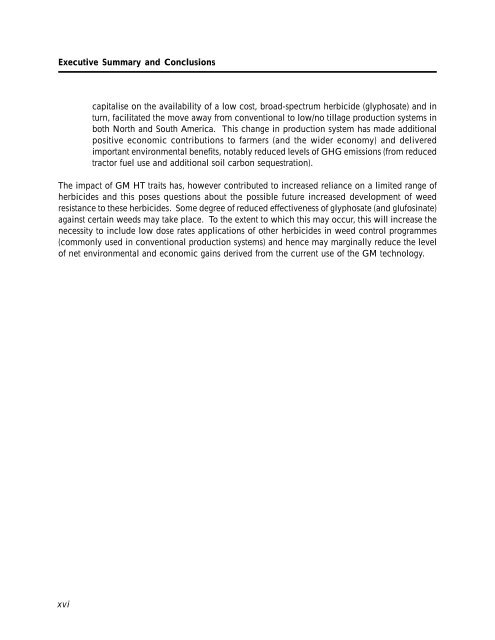GM Crops: The First Ten Years - International Service for the ...
GM Crops: The First Ten Years - International Service for the ...
GM Crops: The First Ten Years - International Service for the ...
You also want an ePaper? Increase the reach of your titles
YUMPU automatically turns print PDFs into web optimized ePapers that Google loves.
Executive Summary and Conclusions<br />
capitalise on <strong>the</strong> availability of a low cost, broad-spectrum herbicide (glyphosate) and in<br />
turn, facilitated <strong>the</strong> move away from conventional to low/no tillage production systems in<br />
both North and South America. This change in production system has made additional<br />
positive economic contributions to farmers (and <strong>the</strong> wider economy) and delivered<br />
important environmental benefits, notably reduced levels of GHG emissions (from reduced<br />
tractor fuel use and additional soil carbon sequestration).<br />
<strong>The</strong> impact of <strong>GM</strong> HT traits has, however contributed to increased reliance on a limited range of<br />
herbicides and this poses questions about <strong>the</strong> possible future increased development of weed<br />
resistance to <strong>the</strong>se herbicides. Some degree of reduced effectiveness of glyphosate (and glufosinate)<br />
against certain weeds may take place. To <strong>the</strong> extent to which this may occur, this will increase <strong>the</strong><br />
necessity to include low dose rates applications of o<strong>the</strong>r herbicides in weed control programmes<br />
(commonly used in conventional production systems) and hence may marginally reduce <strong>the</strong> level<br />
of net environmental and economic gains derived from <strong>the</strong> current use of <strong>the</strong> <strong>GM</strong> technology.<br />
xvi
















